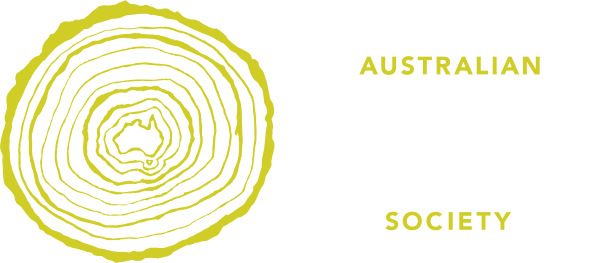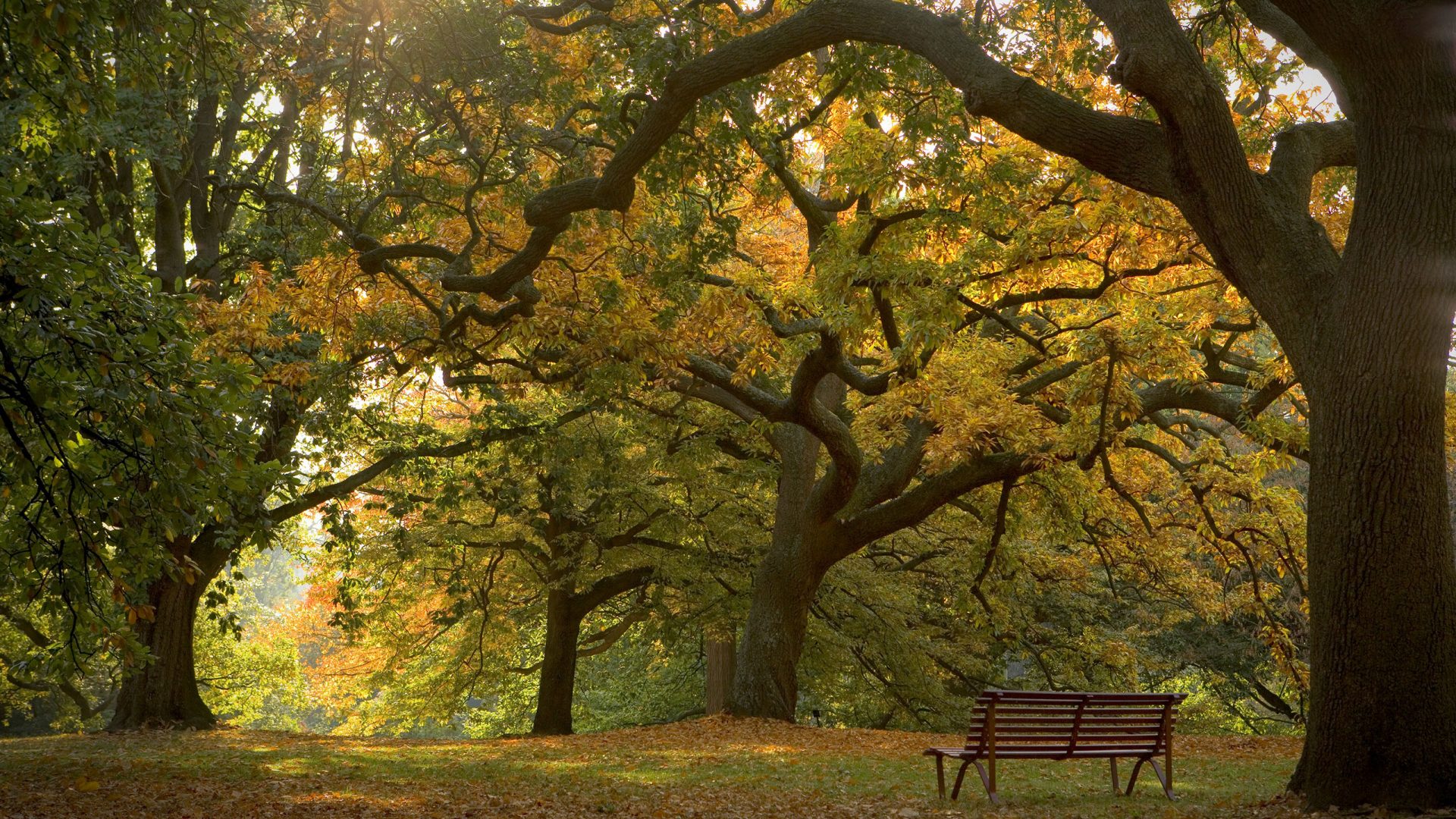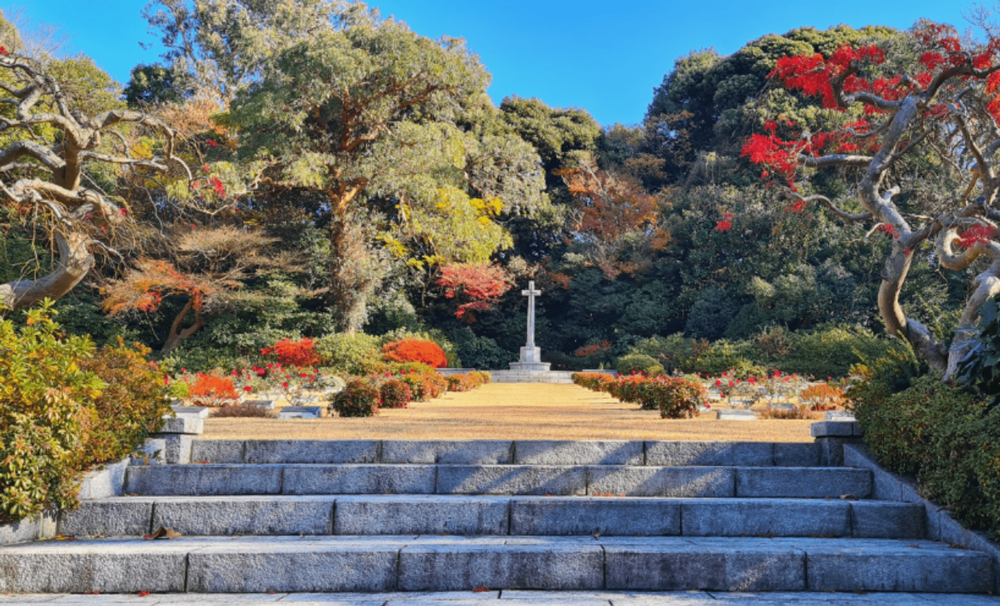Photo, Anoma Pieris
The most significant allied memorial space for the Second World War in Asia — the Commonwealth War Graves Commission’s Yokohama War Cemetery — is barely known to Australians when compared to battlefield tourism sites along the Burma-Thai Railroad, the Kokoda track or at Changi. The exhibition, ‘Eucalypts of Hodogaya’, at Melbourne’s Shrine of Remembrance reinserts it in the public imagination on the 80th anniversary of the war.
‘Eucalypts of Hodogaya’ foregrounds a unique collaboration initiated during a difficult postwar period when hostile sentiments persisted alongside war crimes trials and the Allied occupation of Japan. The title alludes to the overpowering presence of eucalypts at the Yokohama War Cemetery, at Hodogaya, and is indicative of Australia’s role in its creation. The exhibition’s argument is that this was an exceptional diplomatic engagement at a time before the 1951 San Francisco Peace Treaty when Japan was widely ostracised and lacked sovereign agency. Significantly for Australia, the cemetery was designed and created between 1946 and 1951 by the Melbourne-based Anzac Agency and its design team, many of whom were returned service personnel. They reached out to their Japanese counterparts to co-create a memorial landscape that embedded the British lawn cemetery template in a ‘hide and reveal’ garden, producing a war cemetery unlike any other in Asia.
More importantly, their encounters with Japan — many months spent in studying that country’s materials, flora, and landscape attributes and working with Japanese architects, nurseries and contractors — transformed the Australian designers’ approaches both to their profession and the host country. Four of the cemetery’s architects were trained at the University of Melbourne’s Architectural Atelier, making it a natural institutional connection for the curators. The Japanese architects were among a generation trained in modernism, representing its values in an industrialising nation. One of them would receive the Order of the Rising Sun for his work in Scandinavia, for advancing Japanese diplomacy. The marble contractor supplied and clad the interiors of Japan’s National Diet building.
The location of the cemetery at Hodogaya is significant for many reasons. For the Japanese and international art enthusiasts, the place name evokes Edo period Ukiyo-e woodblock prints by famed artists like Katsushika Hokusai and Utagawa Hiroshige. Their illustrations depict the many stations along the Tokaidō route. For others, it seems natural to locate an allied cemetery in a former treaty port that was forced open to the West after 1859. But for many Australians, the cemetery was in a distant location shrouded in the many anti-Japanese prejudices that were fuelled during the war and, more importantly, unfamiliar because Japan had never been colonised. Language barriers, lingering animosity and the challenges of overseas travel inhibited Yokohama’s resonance in the Australian imagination, unlike places like Singapore – a port along a familiar route between Australia and the UK.
The Yokohama War Cemetery has 1555 burials, of which 280 are Australians. Unlike in many other sites that integrate several nationalities, the cemetery has separate sections for the United Kingdom, Australia, Canada and New Zealand, and pre-Partition India. The postwar section includes graves of British Commonwealth Occupying Force personnel, fatalities of the Korean War, and some civilians. Each national plot boasts tree species from that country, silver birch and oak for the UK, sycamore and eucalyptus for Canada and New Zealand, Indian cedar and Himalayan oak for pre-partition India and Eucalypts liberally scattered across the cemetery. The Japanese species include claret ash, atlas cedar, Sakura (cherry blossom), hinoki pine, bamboo, conifers, camphor and cypress among other shrubs and flowering plants. The ginkgo trees familiar in many Japanese cities shed a carpet of gold on the lawn.
The names on headstones speak of the diversity within each country. There is at least one Indigenous Australian soldier whose photograph is featured on the cemetery’s story board. This transnational gathering of allied interests, linked by British imperialism, and augmented by Japan’s vital support during the Korean War, frames the cemetery differently for diplomatic engagements at annual remembrance events. The related political posturing is not evident in the quiet of the peaceful memorial gardens, insulated from the hub of surrounding traffic. Its effects are sensorial – dappled light, rustling leaves and birdsong. Local Japanese visitors treat it as a recreational park.
How can we translate these historic collaborations into contemporary actions? Some portion of these exhibits would need to travel and be recreated in a bilingual exhibition in Japan. An understanding of the continued relevance of the cemetery, its use and its meanings, will need to be learned through collaborative activities involving local Japanese scholars and curators, and by recording visitor perceptions of the event. Only then can the claims of reciprocity be realised.
‘Eucalypts of Hodogaya’ is a free exhibition developed in collaboration with the University of Melbourne at Melbourne’s Shrine of Remembrance from 15 August 2025 until August 2026. More details: www.shrine.org.au/exhibitions/eucalypts-hodogaya


